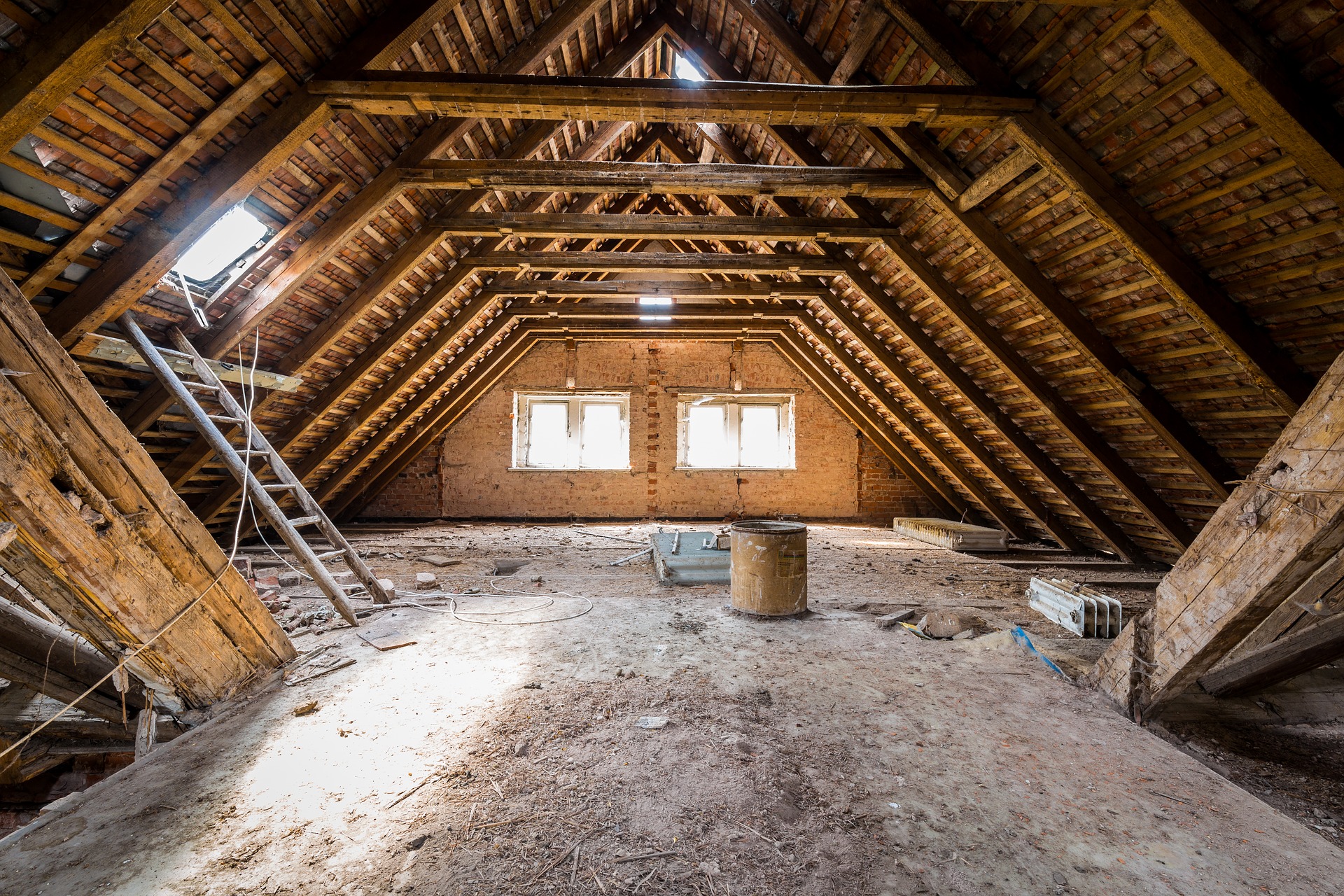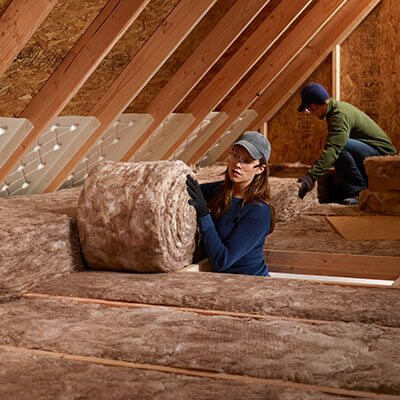Professional Tips for Enhancing Your Home with Attic Insulation DFW
Wiki Article
Discover the Various Kinds Of Attic Insulation and Their Unique Advantages for Your Home's Energy Effectiveness

Fiberglass Insulation
Fiberglass insulation is just one of one of the most generally utilized materials for attic room insulation as a result of its superb thermal performance and cost-effectiveness. Made up of little glass fibers, this material effectively catches air, developing an insulating barrier that helps preserve regular indoor temperatures. Its high R-value per inch makes it specifically efficient at standing up to heat transfer, which is crucial for power preservation in homes.
Installment of fiberglass insulation is relatively simple, typically readily available in batts or loose-fill kinds, fitting different attic setups. In addition, it is resistant and non-combustible to wetness, lowering the threat of mold development. This sturdiness adds to its long life, making fiberglass a sensible lasting financial investment for house owners.
Furthermore, fiberglass insulation is frequently made from recycled products, which boosts its eco-friendliness. The product can additionally add to soundproofing, minimizing noise transfer in between areas. While it is important to wear protective equipment during installment to avoid inflammation from the fibers, the overall benefits of fiberglass insulation, consisting of power savings and ecological factors to consider, make it a popular choice for enhancing attic room efficiency and promoting a comfortable living setting.
Spray Foam Insulation
Spray foam insulation is a very reliable choice for attic insulation, understood for its premium air securing and thermal efficiency. This cutting-edge insulation product is composed of a mixture of isocyanate and polyol resin, which, when incorporated, broadens swiftly to fill up voids and dental caries in the attic room space. Its capability to adhere to various surface areas makes certain a continual obstacle against air leakages, considerably decreasing heat loss throughout chillier months and warm gain during warmer periods.One of the essential advantages of spray foam insulation is its high R-value per inch, which indicates it offers excellent thermal resistance in a reasonably thin application. This is particularly beneficial in attics where area is typically restricted. Furthermore, spray foam can help minimize dampness buildup, lowering the threat of mold and mildew and mold growth, which can be detrimental to both the framework and interior air top quality.
While the preliminary price of spray foam insulation may be greater than traditional choices, its lasting energy financial savings, coupled with boosted comfort and boosted home worth, make it a beneficial financial investment for house owners seeking improved energy performance. Attic Insulation DFW. In general, spray foam insulation stands out as a reliable option for enhancing attic insulation
Cellulose Insulation

Cellulose insulation is a preferred selection for attic insulation, primarily made up of recycled paper products treated with fire resistants. This eco-friendly alternative website link is recognized for its exceptional thermal performance, effectively minimizing warm transfer in both summer and winter season. The dense composition of cellulose enables it to fill spaces and voids in attic room areas, providing a smooth obstacle against air leakages.
Among the considerable benefits of cellulose insulation is its capability to resist mold and mildew and insects, owing to the fire resistant treatments made use of during production. Furthermore, it flaunts a high R-value per inch, which converts right into remarkable energy effectiveness. Property owners can anticipate lower cooling and heating costs as an outcome of improved insulation.
Installment is normally accomplished via blowing loose cellulose right into the wanted area, enabling for a reliable and quick procedure. This approach also minimizes interruption to the existing structure. Cellulose insulation has a fairly reduced environmental impact, as its production process uses recycled products, adding to lasting structure techniques.
Rock Woollen Insulation
Among the various options for attic insulation, rock wool, also understood as mineral wool, attracts attention because of its remarkable thermal and acoustic efficiency. Made from recycled or all-natural products, rock wool is created by melting rock and rotating it into fibers, resulting in an item that offers outstanding insulation homes.One of the considerable benefits of rock woollen insulation is its high R-value, which suggests its effectiveness in withstanding heat flow. This characteristic not only improves power effectiveness yet likewise contributes to keeping a comfy indoor temperature year-round. In addition, rock wool is naturally fire-resistant, making it a more secure alternative for homes as it can stand up to high temperatures without melting or web releasing harmful fumes.
In addition, rock woollen insulation masters soundproofing capabilities, efficiently reducing sound transmission in between spaces and from outside resources. This makes it an excellent option for homeowners looking for a relaxed living atmosphere. Rock wool is moisture-resistant, aiding to prevent mold growth and maintaining the structural honesty of the attic space. On the whole, rock wool insulation offers a detailed service for enhancing energy effectiveness, safety, and comfort in residential setups.
Glowing Barrier Insulation
Radiant barrier insulation functions as an efficient remedy for lessening heat transfer in attic rooms, especially in warmer environments. This kind of insulation jobs by showing induction heat away from living rooms, thereby decreasing the amount of warm that gets in a home throughout warm weather condition - Attic Insulation DFW. Typically composed of an extremely reflective product, such as light weight aluminum foil, glowing obstacles are installed in attics, encountering the roofing system, where they can obstruct inbound warm from the sunlightThe primary benefit of glowing obstacle insulation is its capability to lower cooling prices. By mirroring warm instead of absorbing it, glowing obstacles can assist preserve a much more steady indoor temperature level, reducing the workload on a/c systems. This effectiveness equates into lower energy expenses and increased convenience for home owners.
Along with power financial savings, glowing obstacles can also add to boosted interior air high quality. By decreasing heat buildup, they help decrease moisture degrees, which can prevent mold and mildew development and enhance general air blood circulation. When mounted appropriately, glowing obstacle insulation can be an indispensable addition to any energy-efficient home, making it a worthy factor to consider for home owners looking to enhance their attic room insulation method.
Conclusion
To conclude, comprehending the numerous kinds of attic room insulation-- fiberglass, spray foam, cellulose, rock woollen, and radiant barriers-- allows homeowners to make educated choices pertaining to energy performance. Each insulation kind offers unique advantages, such as remarkable thermal resistance, dampness monitoring, and sound attenuation. By picking the ideal insulation material, substantial decreases in power costs can be accomplished, together with improvements in indoor convenience. Eventually, the right selection adds to an extra sustainable living environment and advertises general energy preservation.

In conclusion, understanding the various kinds of attic room insulation-- fiberglass, spray foam, cellulose, rock woollen, and glowing barriers-- allows house owners to make educated decisions regarding power effectiveness.
Report this wiki page